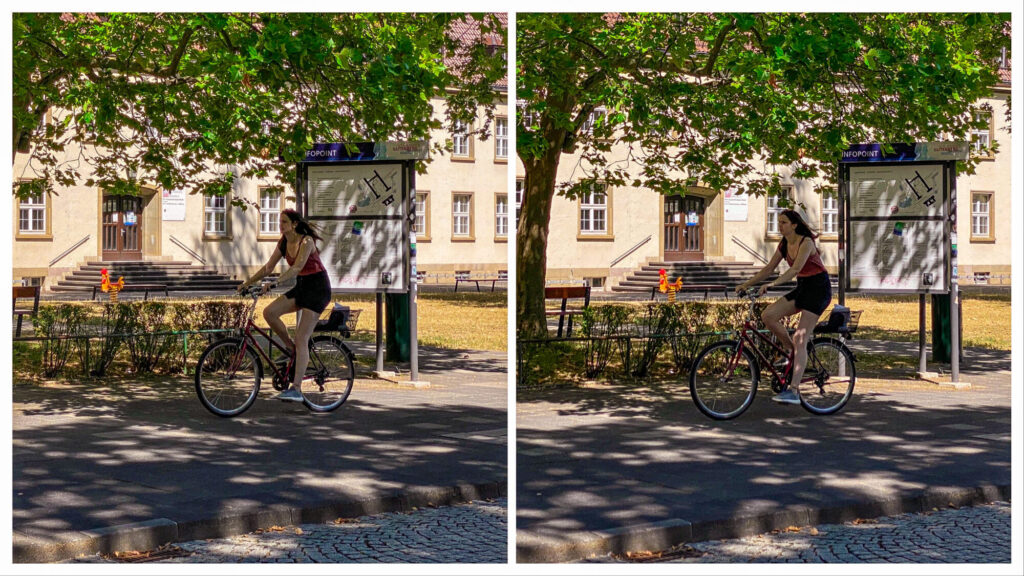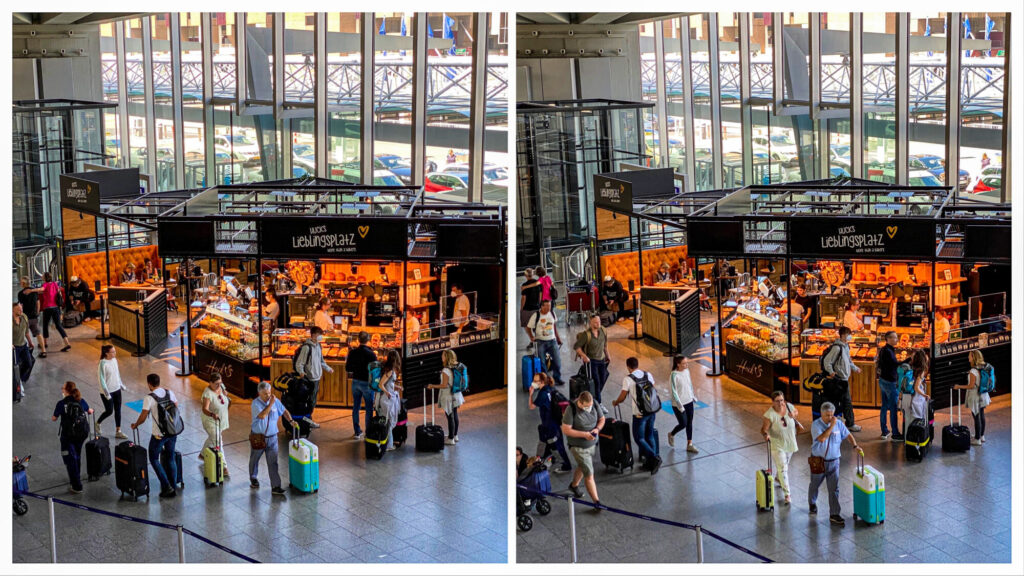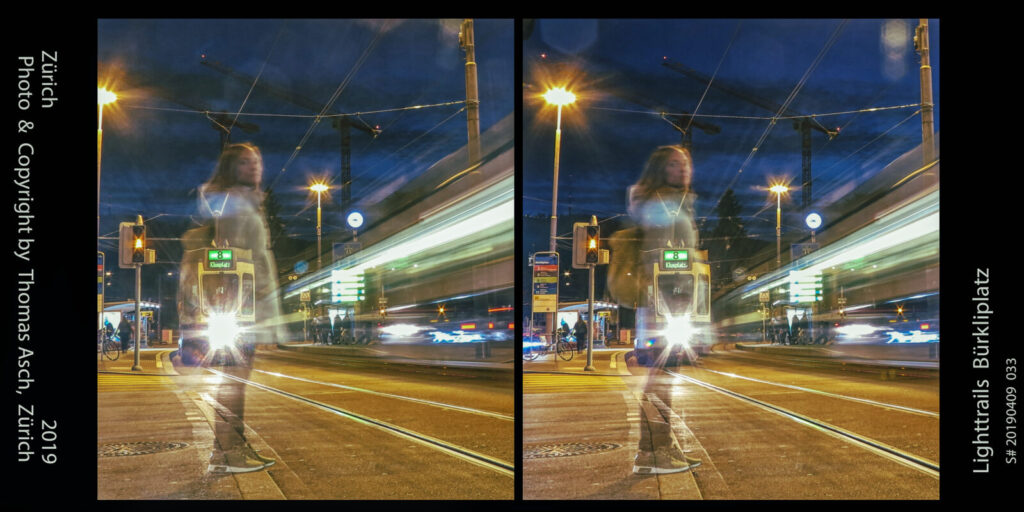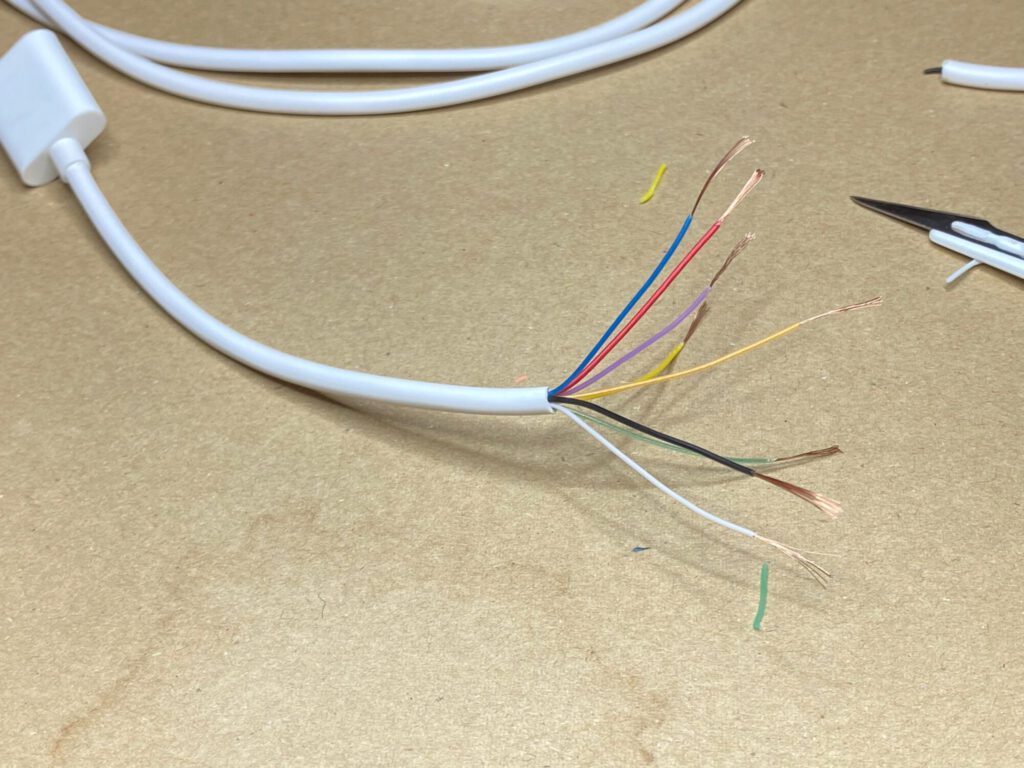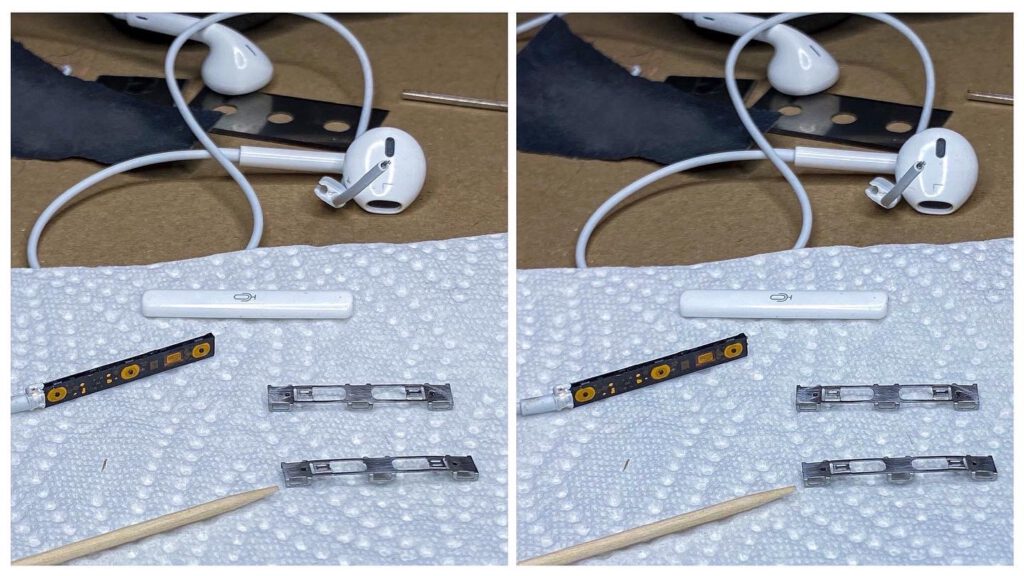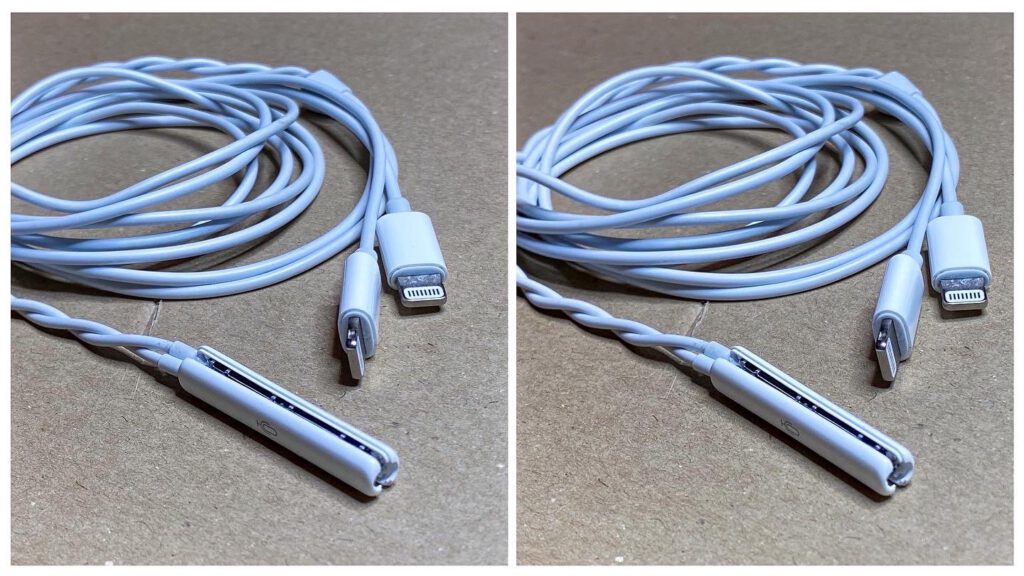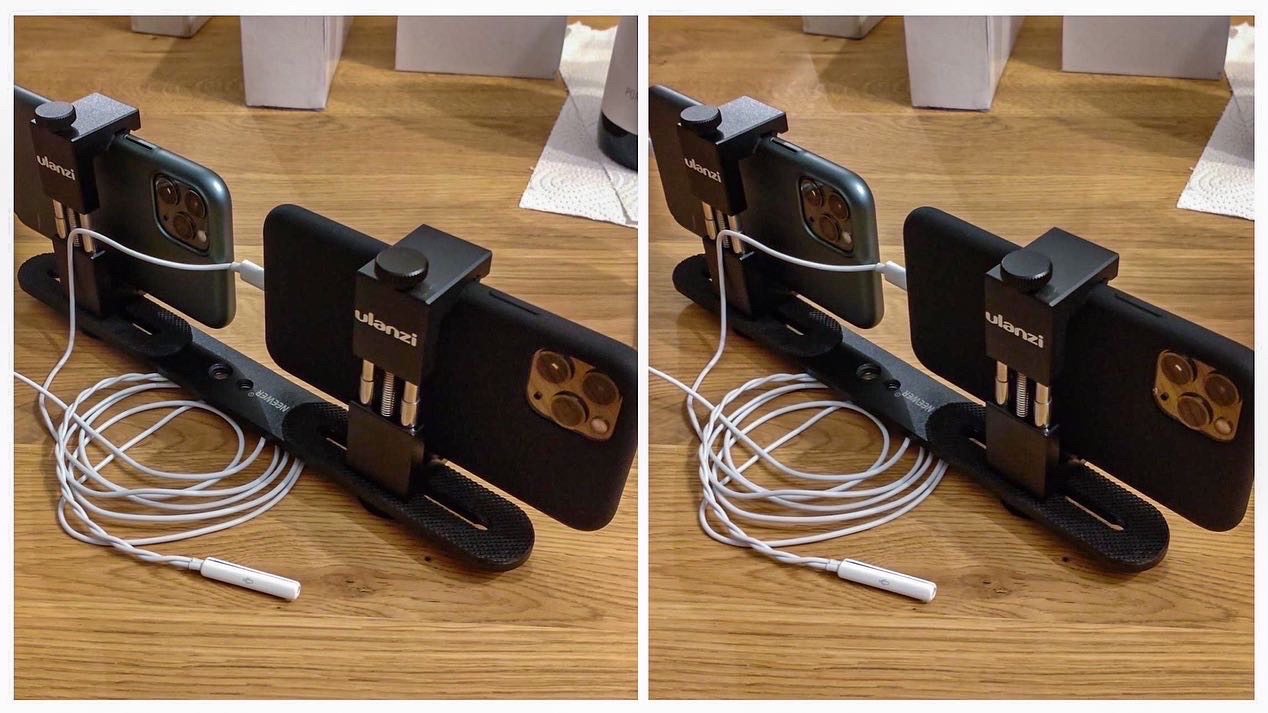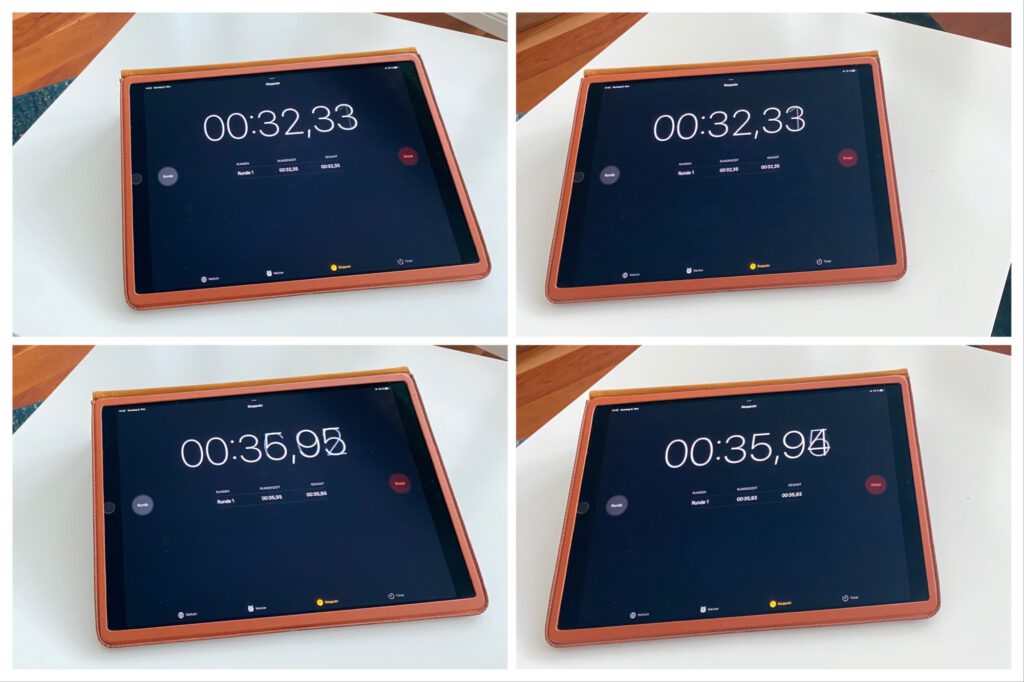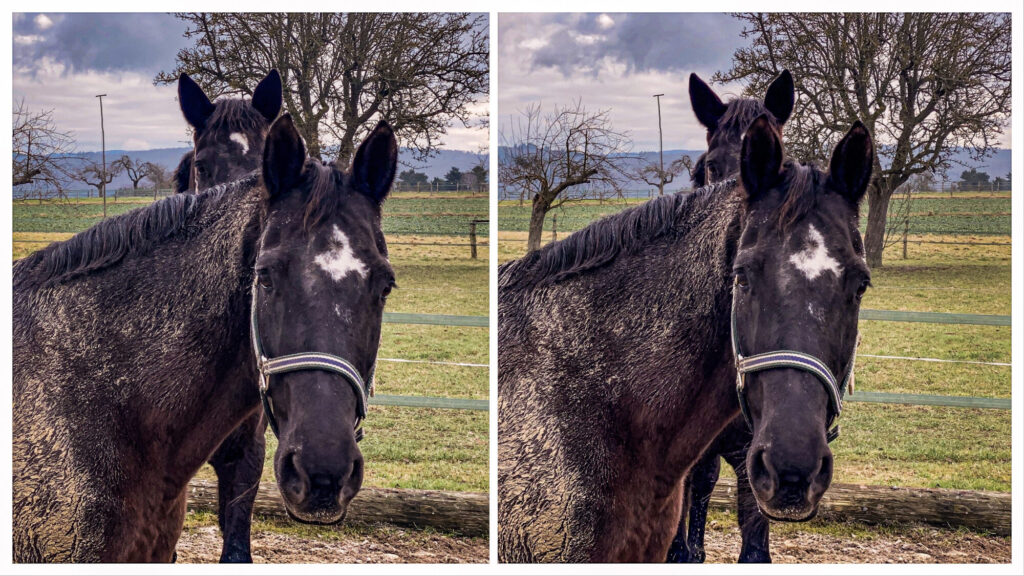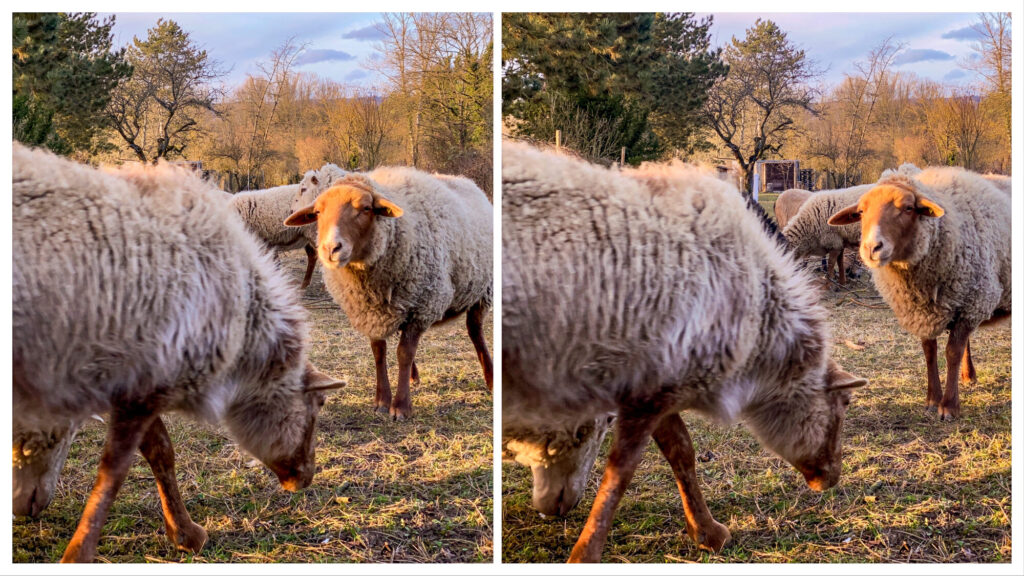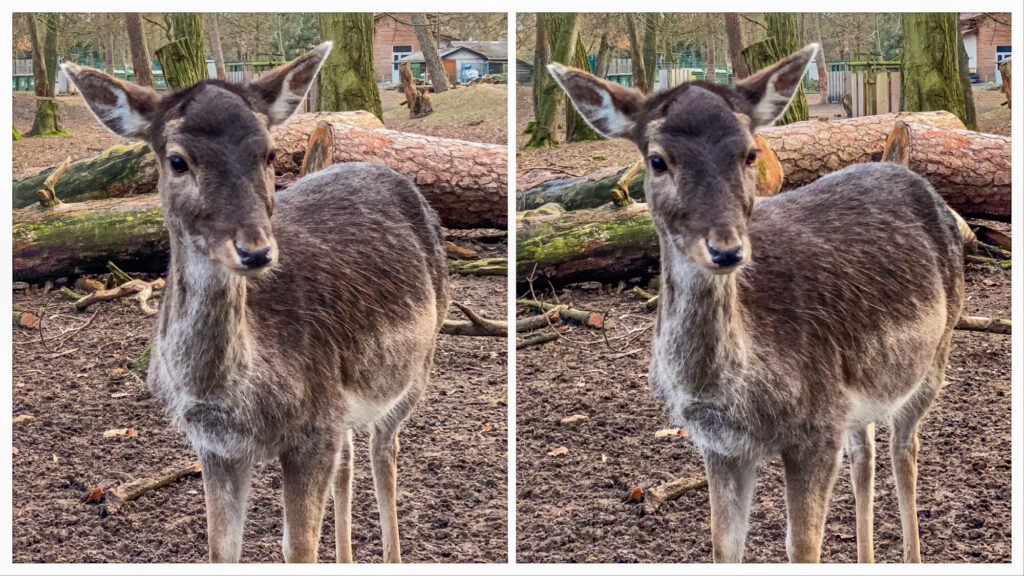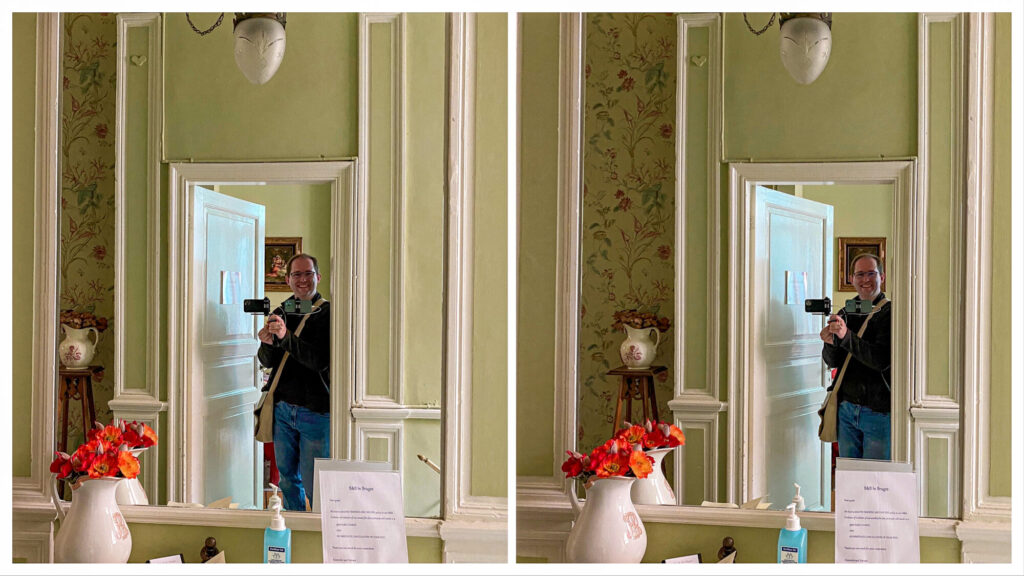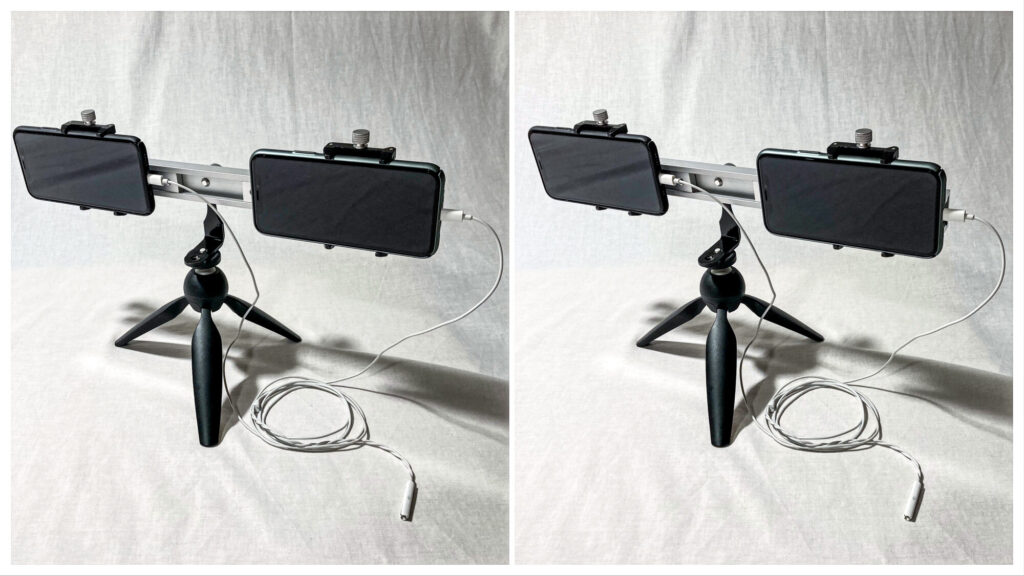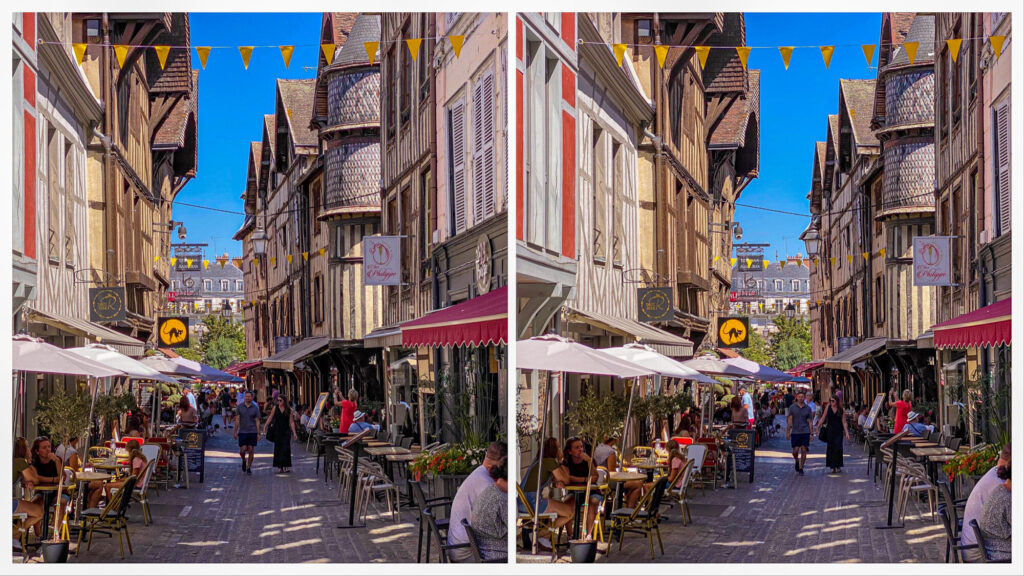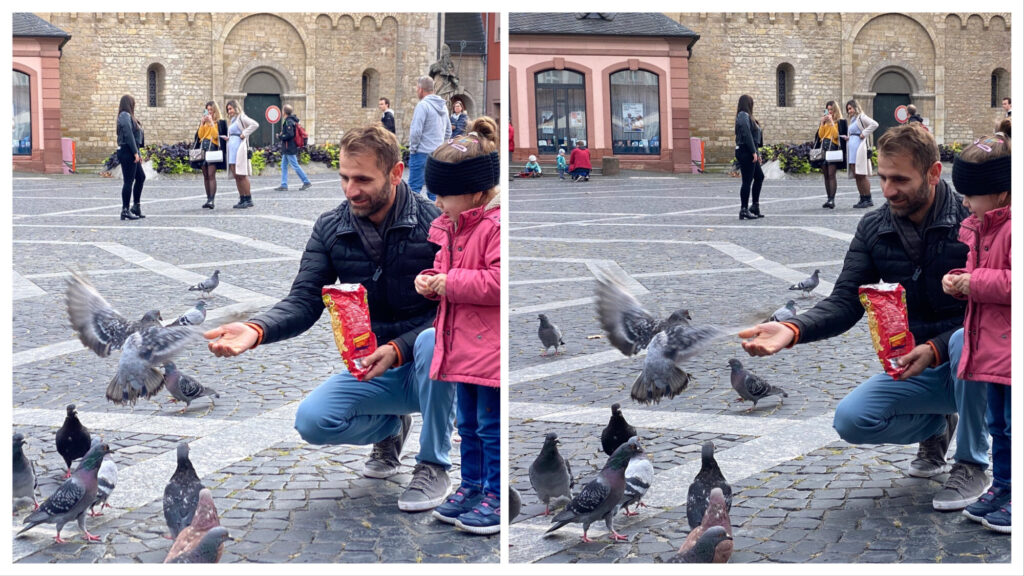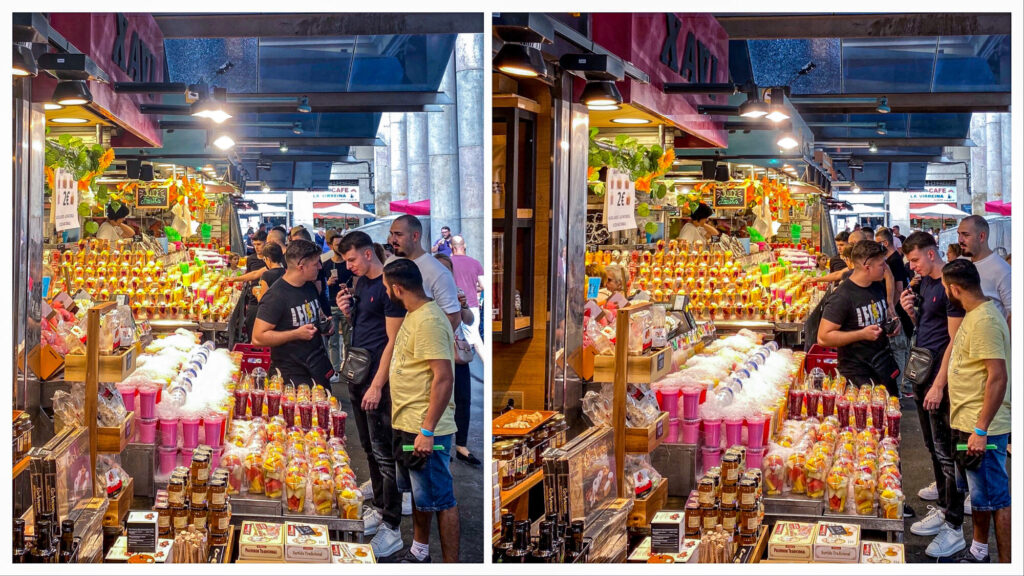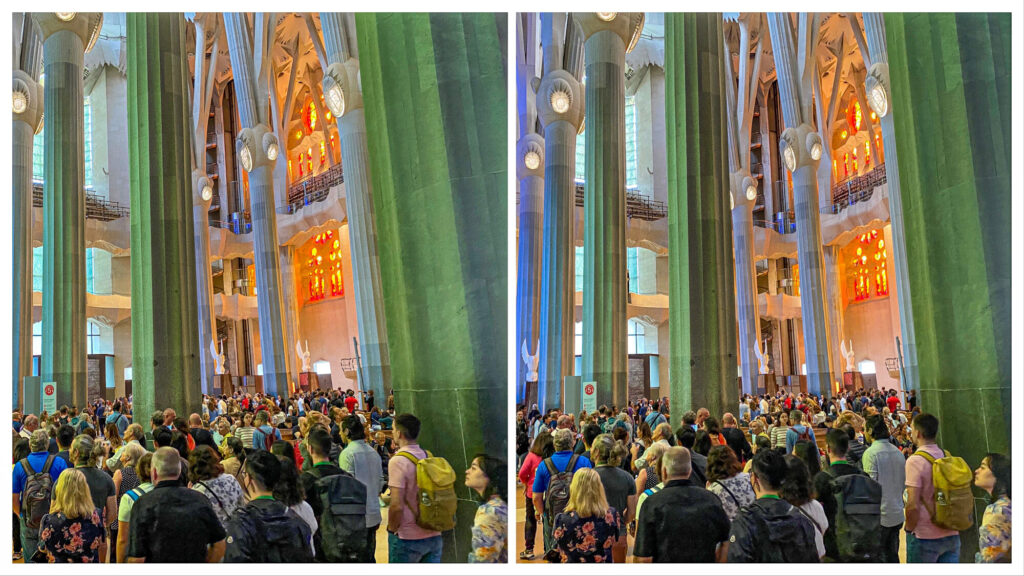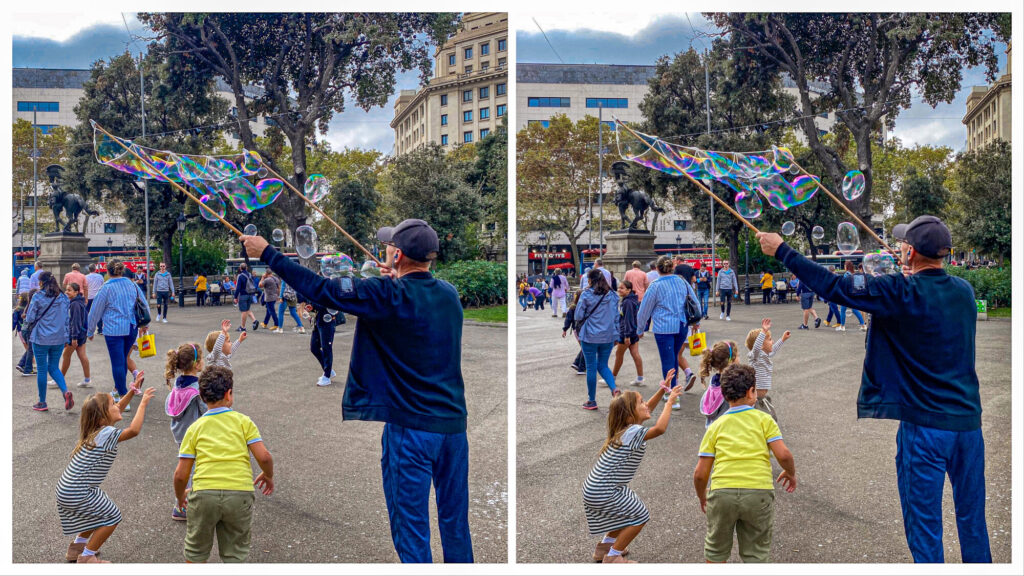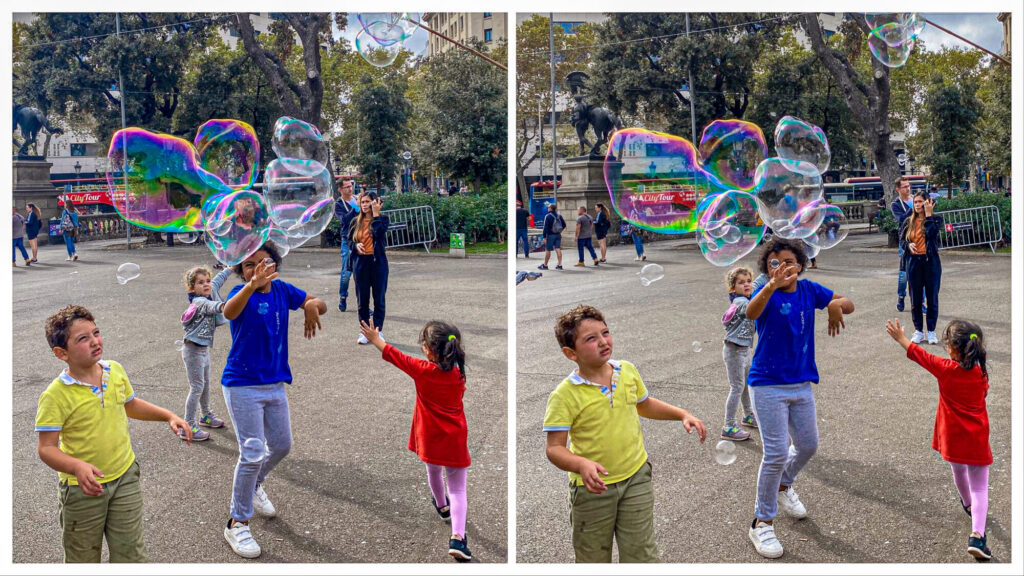Smartphone Syncing — The Best of Two Worlds
written for the stereosite by Pascal Martiné, Germany
Introduction
This article is a sort of sequel to my tutorial Stereo photography to go. There, I explain how I take, combine, edit, and share stereo photos entirely on a smartphone without having to move files to a PC. The whole process usually takes me less than 3 minutes per picture.
That way I got used to the benefits of the smartphone and hardly took my twin camera setup out of its bag anymore. But I had to pay a high price and always regretted that I was limited to sequential stereos.
Sequential versus Simultaneous
If you are used to the technical terms and the practical issues, you can directly jump to the next chapter. For everyone else, I’ll briefly sum up the basics. If we talk about stereo photos taken with a smartphone we usually mean sequential stereo photos, i. e. those taken with a single camera by taking at least two pictures, one after another, while side-shifting the phone. ‘Sequentials’ taken with a phone have several advantages:
- You can control the amount of depth by freely choosing the baseline or by taking a sequence of three or more photos (See David Kuntz’ article Getting the Right Depth in 3D Photography).
- You don’t need any special equipment.
- You can act spontaneously, because your phone is always with you.
- Editing can be done on the same device.
- Data transfer and sharing is relatively easy.
Since we mostly display stereo photos in a small size, newer smartphone cameras are mostly sufficient even for experienced stereo photographers.
But, there is one huge drawback to all sequential stereo photos: Every movement that happens between the first and the second shot will cause so called rivalries. In the best case, this will result in a modified depth perception. But more often it causes annoying flickering.
Even a small gust of wind can disturb a beautiful nature view. Touristic sites are almost impossible or have to be cropped to the detriment of the composition. A single camera mostly limits you to non moving sceneries, like empty streets, architecture or still lives.
The solution for this problem are simultaneous stereo photos. That means that both photos for the stereo pair are taken exactly at the same time. Every movement is perfectly captured, birds float in the air, water fountains look like they’re frozen. It increases your possibilities tremendously.
In most cases, simultaneous stereo photography requires dedicated stereo equipment. Recently, Masuji Suto developed an App for the iPhone that lets you fire two lenses of the back-camera at the same time. More information can be found in the iPhone Closeups gallery.
Preliminary considerations
If you want to move to simultaneous stereo photography, you always have to sacrifice one or more of the advantages of sequential stereo photography. Either you loose control about the baseline, you have to transfer the photos to another device, or you always have to plan to take a stereo rig with you. Especially if you have been using your smartphone, you will have to carry some extra weight.
Personally, I always avoided specific stereo cameras because of their fixed baseline. I also wanted to keep my equipment lightweight. Additionally, I really enjoy keeping the whole process on one device that allows me to instantly free-view my newly taken stereo photos. In 2021, when my ‘older’ iPhone 11 Pro became cheaper as a second hand model, I started thinking about building an iPhone twin rig once again. This time, I took it seriously.
I sacrificed the advantage of not needing additional equipment and invested in a second smartphone, which was still cheaper than two digital cameras of equivalent quality. Also, I would now have to plan in advance to take the stereo rig with me. But it’s much easier to just grab one additional phone and some aluminum parts as opposed to a whole DSLR twin setup.
Except that, I would keep all the other advantages of a smartphone that I’ve mentioned previously, on top of the workflow that I’m already used to.
Selecting the components
In general, every modern smartphone should work in a twin setup. But camera sensors and lenses vary from smartphone to smartphone. That’s why I decided to get two of exactly the same model. Since i3Dstereoid offers auto alignment and auto colour adjustment, you could probably also start with two slightly different models.
The camera trigger method seems to be even more important. You can of course simply press the shutter buttons simultaneously, but that’s not really what syncing means. i3DStereoid also offers pairing two phones, but for me the delay was far from acceptable.
Bluetooth comes to mind first, but it is in fact not an option as it’s a 1:1 connection. I wasn’t able to find any Bluetooth shutter that could be connected to two phones at once. There are a lot of options for digital camera twin setups, but these don’t work with phones. Finally, there are some bluetooth beam splitters available and remote shutters working with high frequency tones, but for me they did not seem reliable enough to even test them.
I’ve then thought of building a mechanical construction to simultaneously touch the screen to shutter or press a button on the side of the phone. In the case of an iPhone, this would be one of the volume buttons. Suddenly, it came to my mind to press the volume control of my cable headphones. That worked. So, iPhones have a built-in wired remote shutter. That would be my starting point for the twin shutter!
The last known problem was the mounting of the two phones. But since there are mounts for phones available that have standard threads, this would only be a matter of research. I would do that after the shutter.
Building the shutter
It goes without saying that there is absolutely no wired shutter available that connects to two smartphones. So I knew that I had to build my own. I believe that it’s probably easier to build such a twin shutter for smartphones with a standard audio jack. But since I have a newer iPhone, I had to deal with Apple’s Lightning connector.
I tried to actually split the lightning cable. Therefore, I connected two lighting extension cables and tried to use them with my headphone. After twisting 24 individual tiny wires in the right order, I connected phone and headphones. It worked. I was delighted. Then I connected the second phone. At first, it only triggered the second phone. After that, nothing happened anymore. Unfortunately the lightning connector is a ‘smart’ connector that incorporates digital information about the connected accessories. Speaking of the technical process, I did not fully understand how the headphone communicates with the smartphone. But I’m sure this is why my attempt completely failed.
After a few days of frustration, I realized that I had to come back to my first idea of a mechanical solution. So I removed the ear pods of two headphones and disassembled the volume controls. Inside, I found two metal carrier plates that I removed and sanded down. I glued them together back to back and reassembled both circuit boards and their covers. This time everything worked as it should. Regardless, I knew that a mechanical solution would always be a bit less precise.
Rig prototype
The search for suitable phone mounts and bracket was as easy as expected and soon I ended up with the first version of my iPhone rig. I knew right from the beginning that I wanted to keep the mounting as small as possible, so this would be no more than a prototype. But it was ready for its first field test.
First results — new issues
Before I tell you why this was a big disappointment again, let me start with something positive. The handling was super easy and lightweight. I would quickly adjust the baseline and then take a stereo pair with just one click. From time to time I would touch corresponding areas of the previews to ensure that both phones would have the same brightness and focus conditions. Transferring the photos between the devices via Apple’s AirDrop worked quickly and the stereo pairs were already almost perfectly aligned. Still, i3DStereoid found a little deviation, but there was almost no cropping of the image.
But when it came to movement, it seemed that being perfectly synced was rather a coincidence. I comforted myself that it still would be easier than taking sequential stereos. I would just have to take 10 shots of the same subject to have one perfectly synced pair. But I already knew that this would not serve as a final solution. For some reason the two phones seemed to individually ‘decide’ when to release the shutter.
I also realized that the way the phone mounts were attached to the bracket was not optimal. When changing the baseline you would always have to pay attention that both cameras were not pointing in slightly different directions. But for now, this was a minor issue.
App research
Next, I tried to find out the reason for the bad syncing of the cameras. Aside from trying to get the right feel for how to press my twin shutter, I did some research into different camera apps. I never had differences of brightness or contrast between both images, so I supposed that it was all about the shutter speed. I found quite a lot of apps that let you control the shutter speed in detail but were less easy to use. Especially when you have to do it twice in the same way. What’s more, most of them simply did not support triggering the shutter with volume controls. There was just one app, that provided both detailed control and volume key functionality. It worked, but it really was a hassle.
I do not remember how I found the solution. Probably it was just by randomly trying every setting. If you tap on the preview window, the camera app will adjust brightness and contrast according to the selected area. If you tap and hold for a second, a yellow label will appear saying “AE/AF lock”. AE stands for Auto Exposure and AF means Auto Focus. But with this, the shutter speed is locked, too. As a result, the syncing reliability increased dramatically. Still, from time to time, one phone seems to need a little time for whatever reason. In the end, it’s an additional step on both phones for almost every photo. But on average I had a delay of less than 3 milliseconds. That could definitely compete with my traditional twin rig on which I used two Canon cameras in auto mode and a wireless shutter system.
From now on, the fun began.
Final rig
As I got more and more used to my rig, my focus on the process of taking a stereo photo changed. Previously, I had always taken a sequence of 3 to 5 photos. That way, I could later choose the best pair based on minimal rivalries and best baseline. Now, I would still take multiple pairs for best sync, but the baseline was always the same. That means I had to start paying more attention to the baseline in advance.
This resulted in constantly having to change the baseline. I soon got tired of unscrewing, moving, adjusting the direction of view and tightening the screws again. It took me quite a while to think of a proper improvement for my purpose. Once again, it was all about researching the right pieces and combining them in a specific way:
For all of you who want to build your own smartphone twin rig, here is the list including links to the products I purchased (these are not affiliate links!):
- 2x metal bicycle phone mounts
- 1x 40cm aluminum T‑rail
- 2x 10cm aluminum T‑slot miter bars
- transparent adhesive film
- 1x binoculars tripod mount
I unscrewed the phone clamps from the bicycle mount and screwed them on to the miter bars. After I had checked for a perfect 90° angle, I screwed them really tight so that they would always keep their position. To avoid the miter bars from sliding through the T‑rail without any control, I applied several layers of adhesive film on all sides that have direct contact to the rail. Now, the bars fit tightly into the rail. They can be easily moved but don’t move on their own.
All of this was rather handicraft except one step. To connect the binocular tripod mount with the rail, I had to cut a thread into the center hole of the T‑rail. For this I used a special thread cutter. Now I am able to connect my rig to any standard tripod. Another improvement was that the bicycle phone mounts are wider and therefore don’t allow any accidental rotation of the phone. T‑rails are available in any length or can easily be extended for an even larger baseline.
Results
The new construction allows me to change the baseline in seconds without having to worry about the alignment of the cameras. I also got more and more used to the workflow:
- Choose baseline
- Lock focus on both phones
- Fire a few times to catch the perfect moment with perfect sync
Especially when I moved on to really animated photos, continuous motion like water or quick and spontaneous shots, I realized how reliable and efficient the iPhone rig had become. Here are some of the photos taken with the final system:
For more examples, see my galleries Stone and Water — A 3D Journey through Bruges and Short Stop in Barcelona.
Caveats
I have not yet figured out the best way to trigger the twin shutter. There are series where 30% of the photos are slightly (~3 milliseconds) out of sync and others where 95% are perfectly synced. This has nothing to do with background processes, because I use both phones in airplane mode. That’s why I think that the finger position matters a lot and I’m trying to improve that.
Depending of your operating system, the camera app might have extra features like QR Code scanning. This could cause additional delay between the two cameras, so better turn off any extras.
Also, I have not tried videos yet. That should actually be easier because you can sync them later, but I doubt this could be done entirely on your phone. If anyone has done stereo videos with two smartphones, please know that any tips are very welcome.
By the way, keep in mind that you are not allowed to take the T‑rail in your carry-on baggage on flights because it might be classified as a dangerous good.
Conclusion
Even though this challenging project took me a year from first idea to routine, I’m really happy about the results. I do not have to keep asking myself if a situation is calm enough to take a stereo or not. I do not have to plan for photo opportunities, charge cameras, and take an additional photo bag with me, I just grab the second phone and the rig. It’s lightweight, it’s simple and it’s convenient.
When I started experimenting, I had a lot of questions how and doubts if it would work. If you ask me today, there is only one single question left: Do you have a second smartphone or are you willing to pay for it? That’s all that matters.
Nota bene: I only tried all of this on iPhones. Theoretically, this should be possible with other phones in a very similar way. If anyone would like to start experimenting with Android phones, let’s have a chat!
Pascal Martiné (Mainz, Germany)
Passionate about stereoscopy as a collector and photographer since 2016. Admin of the stereosite. More on About me.

